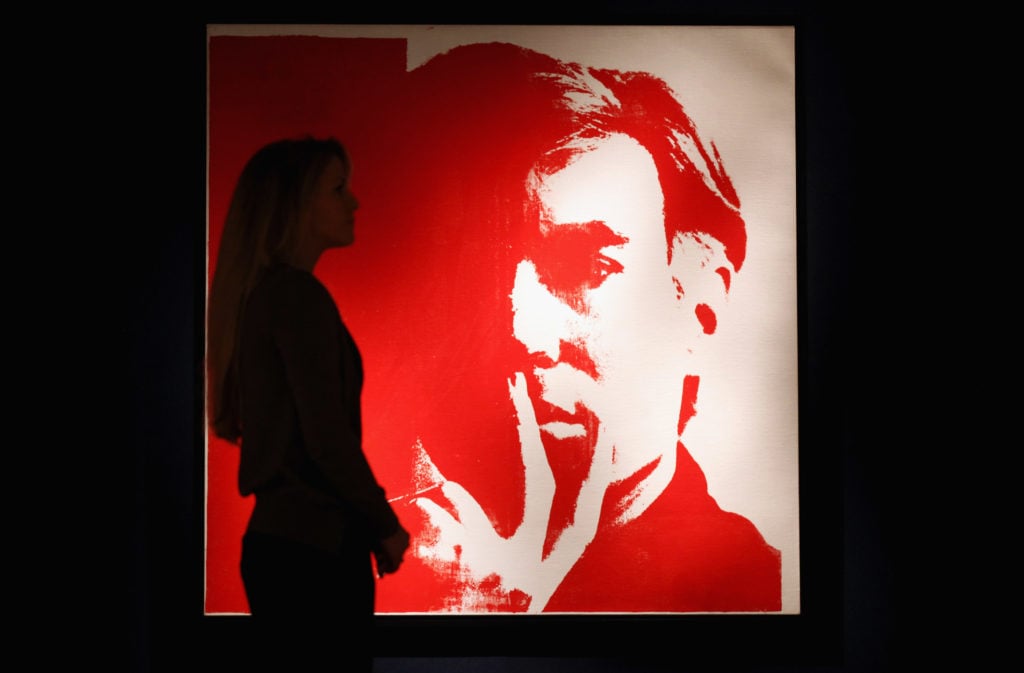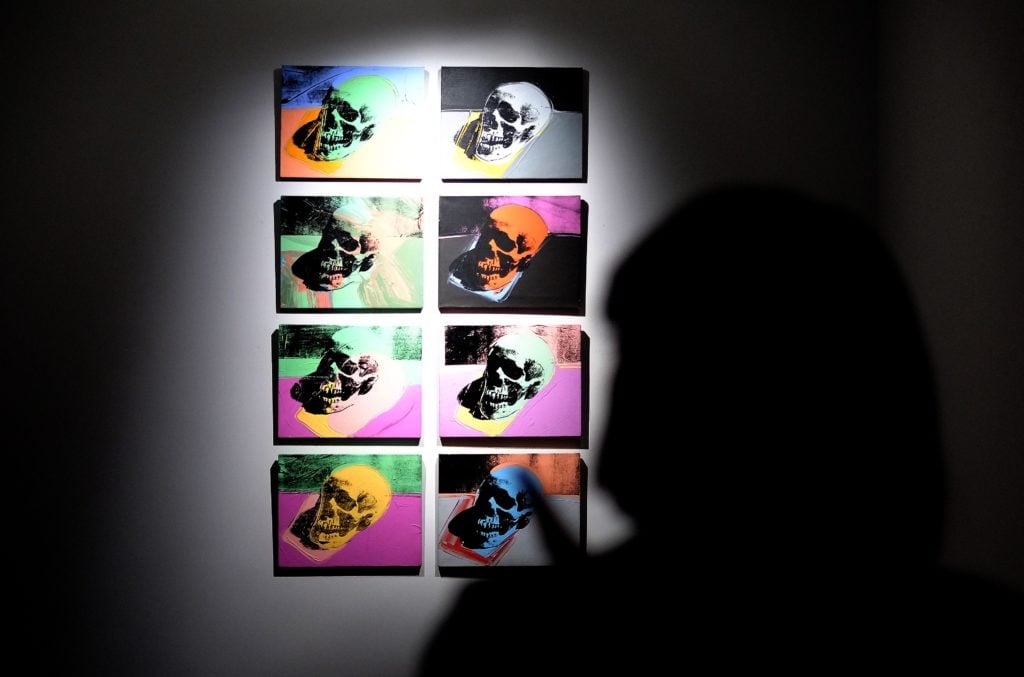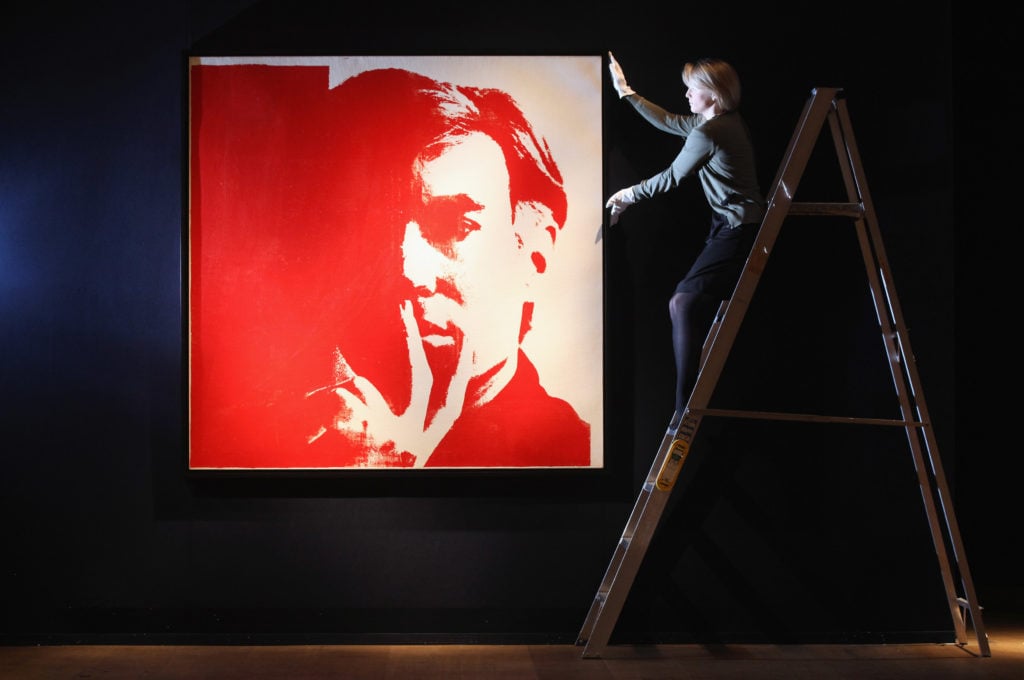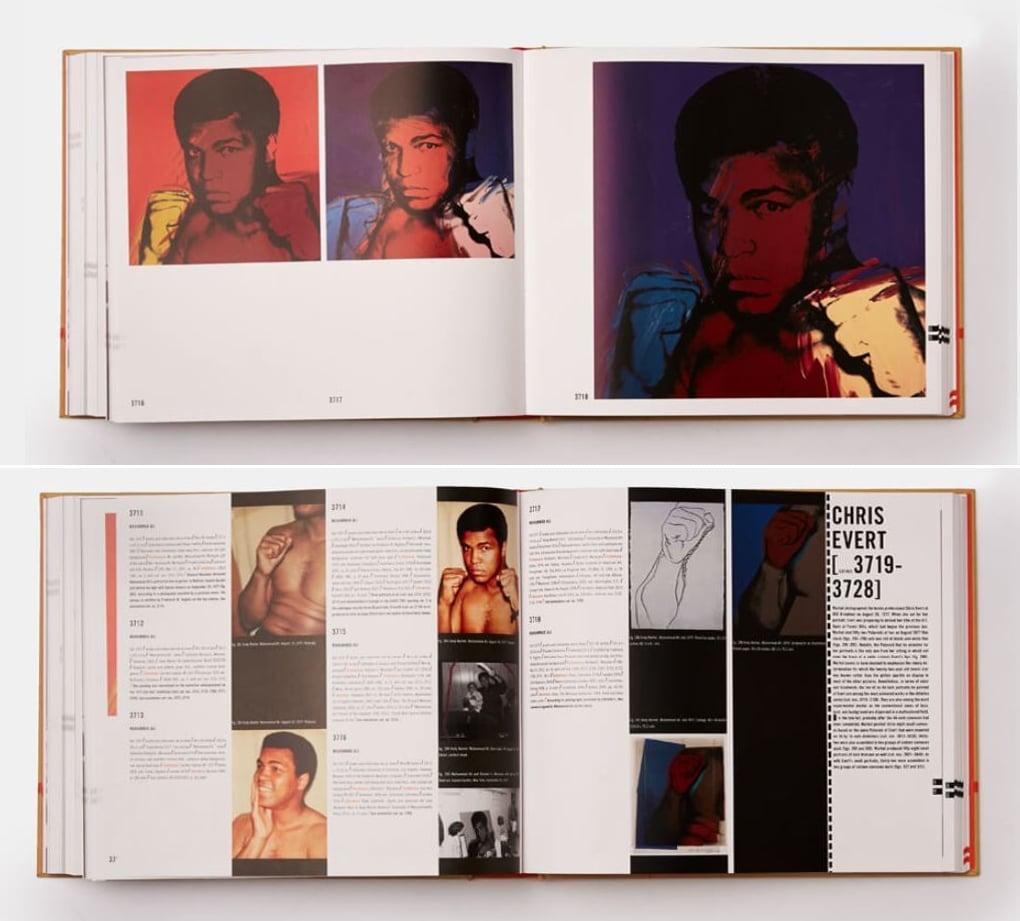Art World
Warhol Wanted to Paint Houses and 4 Other Revelations From the Latest Volume of the Pop Artist’s Catalogue Raisonné
We combed through the $650 book so you don't have to.

We combed through the $650 book so you don't have to.

Richard Polsky

Catalogues raisonnés—scholarly publications that record every single work an artist ever created—require a tremendous amount of time and dedication on the part of researchers. The first volume of the Andy Warhol catalogue raisonné was published in 2002—and, 16 years later, the project is still not complete.
The latest volume by Neil Printz and Sally King-Nero, published on September 4, covers Warhol’s prolific production from 1976 to 1978. But the two-book set is not just for Warhol die-hards. But with a $750 price tag, this book isn’t priced for the casual fan. So we conducted careful reading of the volume and pulled out the most interesting nuggets to reveal the new insights it offers into the work of an artist we think we already know.
Toward the end of Warhol’s career, he made most of his money from portrait commissions. Everyone from Bob Colacello, the editor of Interview, to his business manager Fred Hughes sought to have their portraits done by Warhol. The projects were highly lucrative; sitters paid $25,000 (the equivalent to $100,000 today) for a flattering likeness of themselves.
During the mid-1970s, the dealer Stephen Mazoh approached Warhol with a new twist on the scheme. He suspected that wealthy owners of architecturally significant homes would pay good money to have their spaces immortalized as well. Warhol liked the concept and agreed to allow Mazoh to pursue “house portrait” commissions exclusively on his behalf. But for whatever reason, Mazoh sold only one painting—a diptych of his own house, Milan Hollow Farm (1978).
Years later, Warhol expanded his commission business further, pursuing portraits of cats, dogs, and racehorses that belonged to affluent collectors. This time, he gave the exclusive assignment to British dealer James Mayor and New York dealer Arno Schefler, to lackluster results. Mayor was only able to secure two commissions (both dogs) and Schefler, one (a thoroughbred horse).
For a complete explanation of the house portrait commission project, see catalogue number 3612, Volume 5A. Warhol’s “animal portraits” can be viewed as catalogue numbers 3202–3273, Volume 4.

Part of the exhibition “Warhol” on April 17, 2014 in Rome. Photo: Alberto Pizzoli/AFP/Getty Images.
The most significant Warhol painting series to emerge from the ’70s is widely believed to be the “Maos,” his portraits of the Chinese leader. In this writer’s opinion, the second most important body of work is the “Skulls.” Over the past hundred years, everyone from Paul Cézanne to Pablo Picasso to Damien Hirst has painted this venerable subject. Warhol’s version was executed in a kaleidoscope of colors, balancing the sinister with the friendly, which is what gave them their edge. In 1979, Dia mounted a memorable show of various large “Skulls,” which included two works about the size of a billboard.
However, the real beauties were the small Skulls, which were a more modest 15 inches by 19 inches, about the size of a daily newspaper. The catalogue raisonné reveals that Warhol executed 83 of them; I would have originally guessed around two dozen. They were rarely seen during Warhol’s lifetime, having been exhibited only twice: at Heiner Friedrich in Cologne in 1977, when they debuted, and at Anthony d’Offay’s London gallery during the 1980s, when he showed six of them.
My first exposure to the small “Skulls” came from the Los Angeles painter Chuck Arnoldi, who accepted one of these diminutive works from his dealer in lieu of the $35,000 he was owed. Years later, I would approach Arnoldi with a solid $1 million offer for the work on behalf of a collector. After consulting with his accountant, however, he turned it down.
For more information on the Skulls, see catalogue numbers 3420–3515, Volume 5A.

Andy Warhol’s Self-Portrait (1967) at a preview for Christie’s auction. Photo by Oli Scarff/Getty Images.
One of the highlights of Warhol’s oeuvre are his self-portraits, which he created throughout his career. The origin of these works can be traced back to 1963, when the artist approached his dealer Ivan Karp seeking ideas of what to paint next. Ivan immediately suggested, “People want to see you. Your looks are responsible for a certain amount of your fame—they feed the imagination.”
Warhol’s self-portraits always held the art world’s attention, from his earliest “Photo Booth” paintings to his “Fright Wig” career finale. Yet there was one group that just didn’t cut it: the “Superimposed Self-Portraits.” This mini-series features three images of Andy’s face, layered one on top of the other and screened onto a large canvas. The result was an amalgam of blurred images that were difficult to discern. Mercifully, he only executed eight of them. Two of them ended up at the Andy Warhol Museum, with the rest scattering to private collections.
Examples of the “Superimposed Self-Portraits” can be viewed as catalogue numbers 4060–4067, Volume 5B.

Images of Volume 5. Courtesy of Phaidon,
Interest in portraits of celebrities often wanes over time, as the subjects’ stars begin to fall. Warhol’s “Athletes” series from the ’70s is no exception. The figure skater Dorothy Hamill, the baseball pitcher Tom Seaver, and the ice hockey forward Rod Gilbert—all once marvelous performers—have largely faded from the popular imagination. The lone exception, who became larger than life, is the boxing “champ” Muhammad Ali. (Warhol also painted O.J. Simpson’s portrait, which takes on a very different meaning now.) Not surprisingly, Ali brings—by far—the most money at auction. In November 2007, at Christie’s, one brought a record $9.2 million. To the best of my knowledge, none of the other nine images from the series ever broke $1 million.
The catalogue raisonné points out that each athlete received $15,000 and one finished portrait for posing. Businessman Richard Weisman, who commissioned the series, paid the fee. In 2003, Neiman Marcus’s annual Christmas catalogue offered an entire set of 10 “Athletes” paintings for $13 million (they didn’t sell). Six years later, 10 pictures from the series were stolen during a break-in at Weisman’s Los Angeles home. Mysteriously, Weisman claimed he declined to file an insurance claim to recover the paintings, then worth around $25 million. The reason? He didn’t want the insurance investigators invading his privacy and combing through his records.
To view examples from the Athletes series, go to catalogue numbers 3695–3848, Volume 5A.
Andy Warhol was fond of saying that the painters who were taken the most seriously worked in abstraction. One could argue that art doesn’t get more abstract than his “Oxidation” paintings, also known as the “Piss” paintings. Although these names are often used interchangeably, the catalogue raisonné distinguishes between them. The “Oxidation” works were executed with urine applied directly to primed white canvases. The “Piss” works, on the other hand, were painted with urine on canvases prepared with either copper or gold metallic paint. Years later, in 1982, Warhol took a few of his remaining “Oxidation” paintings and screened Jean-Michel Basquiat’s portrait on top of them—creating arguably the most memorable works from the series.
(Then there are the “Cum” paintings, a subset from this group. But the less said about them, the better.)
The catalogue rasionné notes that the “Oxidation” and “Piss” paintings of 1977–78 were the first series in 15 years that Warhol didn’t create with a photosilksreen. He wouldn’t take another break from silkscreening until the following decade, when he turned his attention to the “Rorschach” series in 1984.
The “Piss” and “Oxidation” series can be viewed as catalogue numbers 3928–4050, Volume 5B.
* * *
While the Andy Warhol Catalogue Raisonné is satisfying (if heavy) to hold in your hands, the future of catalogues raisonnés is probably online. Digital versions, which have been adopted for artists including Sol LeWitt and Sam Francis, cost far less than the $2,985 price tag (so far) for the entire Warhol catalogue. They are also far easier to update when new information comes to light (as it always does). One Warhol volume, for example, includes a multi-panel portrait of sculptor John Chamberlain that was later revealed to have been fabricated by a studio assistant. Perhaps this will be addressed in the future if there’s an addendum published once the entire catalogue raisonné is complete. If the catalogue were digital, it could have been deleted in less time than it takes to read this sentence.
Regardless, Warhol aficionados anxiously await volume six. Though they’ll have to be patient: the most recent volume took four years to produce.
Richard Polsky is the author of I Bought Andy Warhol (2004), I Sold Andy Warhol (too soon) (2009), and The Art Prophets (2011). He is also the owner of Richard Polsky Art Authentication, which specializes in authenticating the work of Warhol, Jean-Michel Basquiat, and Keith Haring.